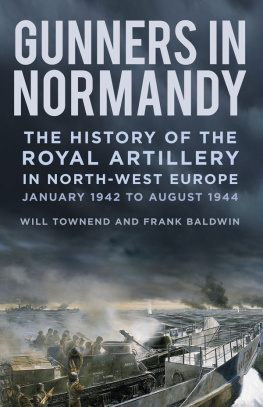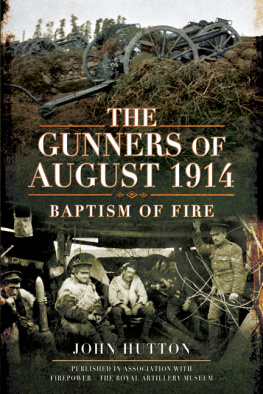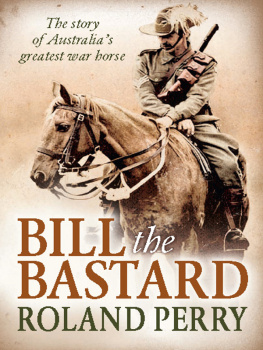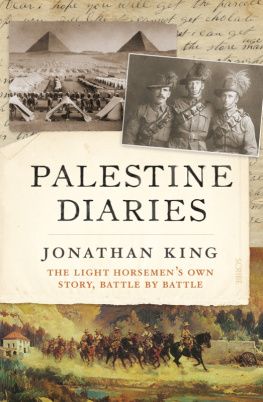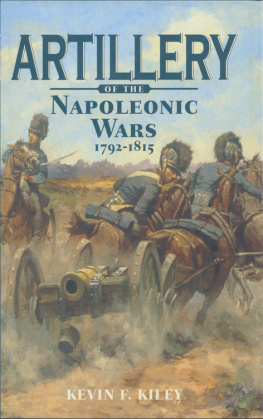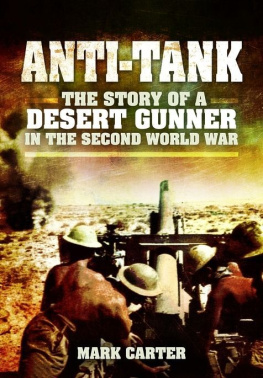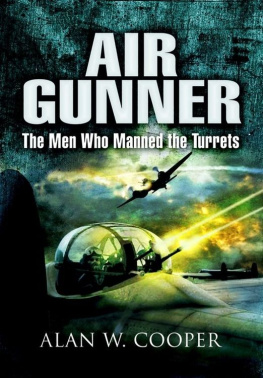Allenbys Gunners
Allenbys Gunners
Artillery in the Sinai & Palestine Campaigns 19161918
Alan H. Smith
First published in Australia in 2016 by
Big Sky Publishing Pty Ltd
PO Box 303, Newport, NSW 2106, Australia
Reprinted in hardback format in 2017 in Great Britain by
Pen & Sword M ILITARY
An imprint of
Pen & Sword Books Ltd
47 Church Street, Barnsley
South Yorkshire
S70 2AS
Copyright Big Sky Publishing, 2016, 2017
ISBN 978 1 52671 465 7
eISBN 978 1 52671 467 1
Mobi ISBN 978 1 52671 466 4
The right of Alan H. Smith to be identified as Author of this work has been asserted by him in accordance with the Copyright, Designs and Patents Act 1988.
A CIP catalogue record for this book is available from the British Library
All rights reserved. No part of this book may be reproduced or transmitted in any form or by any means, electronic or mechanical including photocopying, recording or by any information storage and retrieval system, without permission from the Publisher in writing.
Pen & Sword Books Ltd incorporates the Imprints of Pen & Sword Aviation, Pen & Sword Family History, Pen & Sword Maritime, Pen & Sword Military, Pen & Sword Discovery, Pen & Sword Politics, Pen & Sword Atlas, Pen & Sword Archaeology, Wharncliffe Local History, Leo Cooper, Wharncliffe True Crime, Wharncliffe Transport, Pen & Sword Select, Pen & Sword Military Classics, The Praetorian Press, Claymore Press, Remember When, Seaforth Publishing and Frontline Publishing
For a complete list of Pen & Sword titles please contact
PEN & SWORD BOOKS LIMITED
47 Church Street, Barnsley, South Yorkshire, S70 2AS, England
E-mail:
Website: www.pen-and-sword.co.uk
DEDICATION
This account of the Sinai and Palestine campaigns from an artillery perspective is dedicated to my two historical mentors, Major James Essington Lewis, ED, and Major General John Stewart Whitelaw, AO, CBE.
List of photographs
Colonel Charles Rosenthal, Australian commander of the artillery supporting the combined Allied force that defended the Suez Canal against a Turkish attack in early 1915.
Major General S.C.U. Smith, Allenbys MGRA.
Each squadron of the Australian Light Horse had either horse and/or vehicle-mounted Lewis, Vickers or Hotchkiss machine-guns.
Lieutenant General Sir Harry Chauvel, GOC Desert Mounted Corps. The Hong Kong Singapore Mountain Battery training with its light field guns.
An 18-pounder field gun and crew. These guns equipped infantry divisional artilleries.
An RGA 60-pounder gun and part of its detachment.
Brigadier Charles Cox, GOC 1st Australian Light Horse Brigade, and Major General E.W.C. Chaytor, GOC NZMR Brigade. Both were enthusiastic supporters of the arme blanche cavalry approach to combat.
Captured Turkish artillery at Rafa is inspected by the leaders of the cavalry involved.
The terrain showing the infantrys approach to Gaza prior to First Gaza. The cactus hedges evident here proved a serious obstacle for the infantry. They were eventually obliterated by shellfire.
Australian light horsemen look over a British Mk I female tank prior to the Second Battle of Gaza.
The aircraft of No. 1 Squadron, AFC.
An Australian soldier operates a wireless set at a field station during the first Amman stunt in March 1918.
Cavalry crossing the Jordan River at Ghoraniye by pontoon bridge, one of which was erected by a Canadian engineer bridging unit.
The topography of the Jordan Valley and the Musallabeh feature.
The Abu Tellul feature was regarded by both the Allies and Turks as tactically important and was contested by both sides. It was the site of a combined German-Turkish defeat.
A wagon brings supplies to a detachment note the tracks (foreground) and dust. Troops were rotated for duty during summer in the Jordan Valley which was noted for its vile climate, sickness, mosquitoes, dust and heat.
A scene in the dust at Megiddo (Lejjun) during the advance on Damascus, showing the Australian Light Horse advancing and prisoners by the wayside.
Two RA officers stand with a captured German coastal artillery piece (150mm) used against the attackers during the cavalry fight for Haifa.
Note: despite my best efforts I could not locate photographs of the artillery commanders from the cavalry or infantry divisions.
List of maps
Narrative 1
A. The Sinai Desert area of operations in 1916.
The Turkish attack on the Romani position showing the furthest extent of the Turkish advance on 5 August 1916 and the positions of the supporting and enemy artilleries.
The unsuccessful assault on Bir el Abd by the 1st Australian Light Horse and NZMR brigades and their supporting RHA batteries, Leicester, Ayrshire and Inverness, on 9 August 1916.
The Battle of Magdhaba, 23 December 1916, showing the artillery gun positions and the cavalry approaches.
The encirclement of Rafa by the NZMR Brigade, 5th Mounted Brigade, five Australian Light Horse regiments and the ICC, with artillery positions indicated.
The First Battle of Gaza showing the dispositions of horse, field and heavy artilleries at dusk on 26 March 1917.
Second Battle of GAZA showing the cavalry friendly eastern flank on which the Turkish attack was concentrated and repulsed. The Atawine Redoubt was the most important tactical feature.
Narrative 2
B. Map showing the coastal plain and rugged nature of the hinterland, major towns and villages, roads and railways of Palestine where most of Allenbys battles were fought.
The Battle of Beersheba (31 October 1917) showing the assault on the town by XX Corps infantry from the west and the eastern and northern DMC cavalry approaches.
The Third Battle of Gaza (27 October7 November 1917) showing the 15- mile corps front from the coast to the eastern perimeter.
The beginning of the Great Northern Drive to secure the coastal plain, including the Sheria position.
The famous charge of the Bucks Hussars, Worcester and Warwick Yeomanrys at Huj on 8 November 1917 supported by both RGA and RFA batteries.
The action at El Mughar by the 5th Mounted Brigades Dorset Yeomanry and Bucks Yeomanry on 13 November 1917.
The northern flank on the Wadi Auja proved vital to tying down the Turkish VIII Corps and, ultimately, to the capture of Jerusalem.
The battle for Jerusalem lasted a month. This map shows the dispositions of the infantry divisions before the final, successful attempt in December.
The Nebi Samwil feature north-west of Jerusalem showing artillery positions at Biddu, the only area suitable for protecting the Zeitoun and El Jib to Beit Iska front line.
The raid on Amman from 27 March to 2 May 1918 was a cavalry operation featuring a three-pronged advance which failed due to a lack of artillery support.
Map illustrating the loss of nine RHA guns during the debacle east of the Jordan River when the Australian light horsemen were beaten by a superior Turkish force.
The actions east of the Jordan the Es Salt raid, showing the dispositions of the attackers and defenders.
The Abu Tellul defence and counter-attack of 14 July 1918 and the positions of supporting artillery.
The Battle of Megiddo evolved as General Allenby planned, with the DMC bearing north-east to encircle the Turkish Twentieth Army while the XX Corps infantry and Chaytors cavalry pinned down the Turks western front prior to the capture of Amman.


![Lt Col C. G. Powles - THE NEW ZEALANDERS IN SINAI AND PALESTINE [Illustrated Edition]](/uploads/posts/book/399129/thumbs/lt-col-c-g-powles-the-new-zealanders-in-sinai.jpg)
